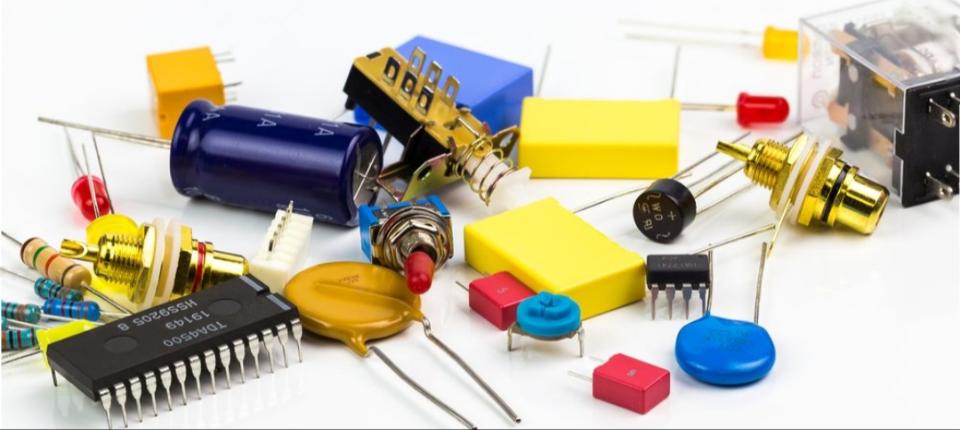Electronic devices have become an integral part of our daily lives. From computers and smartphones to cars and appliances, electronics are all around us. However, most people are unaware of the key components that make these devices function. While active components like transistors and integrated circuits get more attention, it is the passive components that form the critical backbone of modern electronics.
Passive vs Active Components
To understand passive components, we must first differentiate them from active components. Active components are those that require an external power source like batteries or wall outlets to function. They can control or amplify signals without external intervention. Common examples include transistors, op-amps, integrated circuits, etc.
On the other hand, passive components do not require an external power supply to work. They simply shape, direct or restrict the flow of signals in a circuit without adding or amplifying power. Passive components are fundamental building blocks used along with active components in virtually all electronic devices. Some key types of passive components are discussed below.
Resistors
Resistors are one of the most basic and commonly used Passive Electronic Components. As the name suggests, they resist the flow of current in a circuit. Resistors come in various fixed resistances and are used to control current, divide voltages, terminate transmission lines, and provide protection from voltage spikes, amongst other functions. Carbon composition, metal film, and thin film are popular resistor types used depending on the application. Resistors play a crucial role in circuits where precise current or voltage levels need to be maintained.
Capacitors
Capacitors are components that can store electrical charge and release it when needed. They allow signals to pass through while blocking direct current (DC). Capacitors temporarily store energy in an electric field between two nearby conductive plates separated by an insulator called a dielectric. Common capacitor types include electrolytic, tantalum, ceramic, film, and mica capacitors.
Capacitors are used as filters to block DC from circuits and pass higher frequencies like audio signals. They are vital components in power supply circuits, timing circuits, voltage regulation circuits, DC link circuits, resonant circuits, and coupling/bypassing applications. Proper selection of capacitor ratings and types is important based on electrical specifications and operating conditions.
Inductors
Like capacitors, inductors can also store energy – in their magnetic fields rather than electric fields. Inductors oppose changes in current and effectively delay or smooth out the AC signal passing through them. They are made from coils of wire wrapped around ferrite cores or air cores.
Inductors find use in filtering high frequencies, smoothing power supplies, synthesizing frequencies, coupling signals, controlling current surges, and ignition coils amongst others. Their key parameters include inductance value and saturation current ratings. Toroidal inductors are commonly used as cost-effective audio/RF chokes across power supply lines to prevent ripples or interference.
Transformers
Transformers utilize electromagnetic induction to transfer electrical energy from one circuit to another or alter voltage levels. They have two or more coils wrapped around a core and work on the principle that alternating voltages induce corresponding alternating voltages in nearby conductors.
Transformers are used to step up or step down AC voltages in applications like power transmission lines, home electricity distribution, battery chargers, etc. Audio output transformers are used to match low impedance electronics signals to higher impedance speakers or headphones. RF/wireless communication devices make extensive use of transformers to transmit or receive signals efficiently.
More Types of Passive Components
Some other widely used passive electronic components are wires, cables, connectors, switches, potentiometers, trimmer pots, diodes, thermistors, varistors, ferrites, crystals and piezoelectric sensors.
Wires are used to connect all circuit elements and transfer signals or power. Switches and potentiometers are used to control circuit functions manually. Thermistors, varistors and diodes have characteristics dependent on operating temperature or voltage to provide overcurrent, overvoltage or thermal protection. Ferrite materials are employed in components like transformers, chokes and antennas due to their magnetic properties. Finally, sensors like crystals and piezo discs enable input and output conversion for electronics.
Applications and the Future
The range of passive components is extremely vast to cater to myriads of electronics applications. From consumer goods to industrial machinery to military systems – virtually every electronic device relies on passive components. Advances in nanotechnology have enabled miniaturization down to chip scale for components like thin film resistors. New composite materials continue expanding the frontiers of passive component characteristics and capabilities. With the proliferation of IoT, autonomous systems and 5G – passive components will remain at the heart of powering the electronics revolution into the future.
*Note:
1. Source: Coherent Market Insights, Public sources, Desk research
2. We have leveraged AI tools to mine information and compile it

